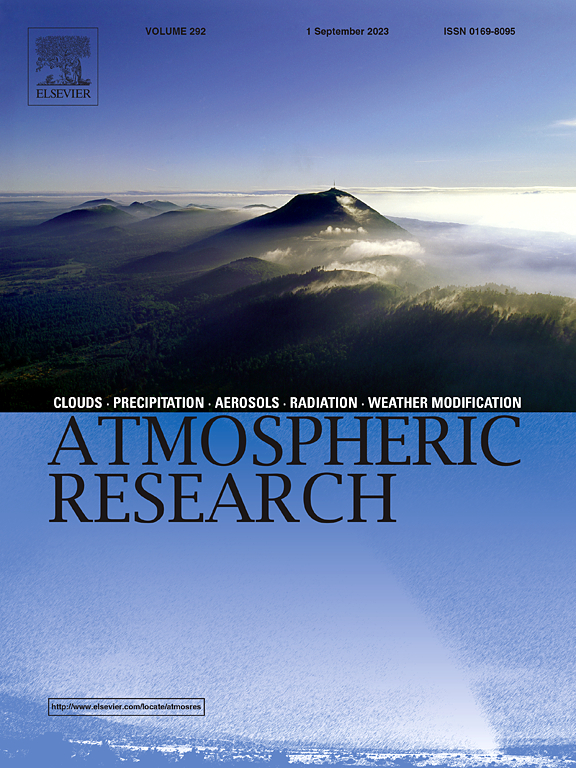Ver ítem
- xmlui.general.dspace_homeCentros Regionales y EEAsCentro Regional Patagonia NorteEEA BarilocheArtículos científicosxmlui.ArtifactBrowser.ItemViewer.trail
- Inicio
- Centros Regionales y EEAs
- Centro Regional Patagonia Norte
- EEA Bariloche
- Artículos científicos
- Ver ítem
Monthly variations of forcing mechanisms of austral summer precipitation in subtropical Argentina
Resumen
Summer precipitation is a crucial variable for Subtropical Argentina (STAr) from a social and economic perspective. Monthly forcing mechanism variations of subregional summer precipitation over STAr are studied. Most subregional precipitation anomalies are related to a convection dipole between eastern STAr and the South Atlantic Convergence Zone (SACZ) region. In this sense, wet (dry) conditions in subregions of eastern STAr are associated with anomalous
[ver mas...]
Summer precipitation is a crucial variable for Subtropical Argentina (STAr) from a social and economic perspective. Monthly forcing mechanism variations of subregional summer precipitation over STAr are studied. Most subregional precipitation anomalies are related to a convection dipole between eastern STAr and the South Atlantic Convergence Zone (SACZ) region. In this sense, wet (dry) conditions in subregions of eastern STAr are associated with anomalous low-level anticyclonic (cyclonic) tropospheric circulation in southeastern Brazil. The anomalies are mainly associated with a teleconnection via Rossby wave train that propagate through the South Pacific, which is link to El Niño Southern Oscillation (ENSO) phenomena in December, to enhanced convection in the western tropical Pacific in January, and to conversion of mean flow kinetic energy in January and February. Also, the anomalous low-level anticyclonic tropospheric circulation in southeastern Brazil (wet conditions in eastern STAr) is related to anomalous Walker cell caused mainly by an active convection core in the western Pacific basin probably owing to the Madden-Julian Oscillation (MJO) phases 6 and 7. In addition, dry (wet) conditions in subregions of southwestern STAr in January and February are associated with an anomalous low-level tropospheric anticyclonic (cyclonic) circulation over Patagonia and the Argentinian Sea. The tropospheric anticyclonic circulation anomaly center in February appears to be generated by vorticity flux convergence owing to a quasi-stationary Rossby wave activity from the previous month (January) that generates positive geopotential height anomalies over Patagonia and surrounding areas.
[Cerrar]

Autor
Hurtado, Santiago Ignacio;
Agosta Scarel, Eduardo A.;
Zaninelli, Pablo G.;
Fuente
Atmospheric Research 285 : 106609. (April 2023)
Fecha
2023-04
Editorial
Elsevier
ISSN
0169-8095
1873-2895
1873-2895
Formato
pdf
Tipo de documento
artículo
Palabras Claves
Derechos de acceso
Restringido
 Excepto donde se diga explicitamente, este item se publica bajo la siguiente descripción: Creative Commons Attribution-NonCommercial-ShareAlike 2.5 Unported (CC BY-NC-SA 2.5)
Excepto donde se diga explicitamente, este item se publica bajo la siguiente descripción: Creative Commons Attribution-NonCommercial-ShareAlike 2.5 Unported (CC BY-NC-SA 2.5)


